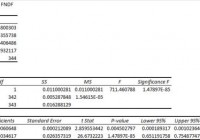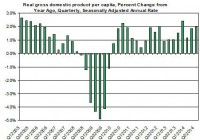Risks And Avoidable Mistakes For 2015
Originally published on Jan. 4, 2015 Introduction For most dollar oriented investors 2014 was an “okay” year with a third year in a row of double digit gains for the S&P 500, but not for the bulk of institutional accounts. Consciously or not, many investors and managers were aware of the length of the present bull market having entered its 61st month. This has created twin dilemmas for the prudent management of responsible money. First dilemma – Large Cap over-ownership As regular readers of these posts recognize and true to my analytical history, I tend to view investments through the lens of mutual funds. When simplifying the fund performance data for 2014 by size of market capitalizations the following is revealed: Large Cap funds 11% Multi-cap funds (Unrestricted/ or “go anywhere” funds 9% Mid Cap funds 8% Small Cap funds 3% In a dynamic economy the rank order of operating earnings power generation would be in the opposite order, being led by Small Caps or possibly the successful “Go Anywhere” funds. Focusing on operational earnings, excluding foreign exchange benefits, I believe that the Large Caps were producing approximately 3 times the long-term growth of the Small Caps. The better market performance of the Large Caps, I believe, was a function of market structure changes. Some institutional investors being concerned with the duration of this bull market moved heavily into Large Cap stocks directly or more importantly through the use of ETFs invested in the S&P 500 and other indices. Because of perceived greater liquidity in Large Caps they were hiding out in what we used to call warehouses. With governments all over the world looking to Large Caps being “social progress” engines, I have some doubts as to the growth prospects for Large Cap companies. Second dilemma – Historical constraints As is often the case, apparent boundaries come with both hard data and locked-in thought processes. The data is the easy part. While as noted we are in the sixty-first month of the recovery, of the nine last market recoveries, four have been over 100 days in length with the longest being 181 days. Thus for a manager a possible career risk is exiting too soon which puts a premium on investing in liquid positions. Because so many others have made similar judgments as to the better liquidity in Large Caps, if there is a sudden drop in the market, I believe the excessive amount invested in Large Caps will find their exit liquidity either expensive or non-existent for those that are late. The biggest risk for investors and their managers are the biases that many of us labor with in making so-called rational decisions. The following are a list of these biases as listed by Essential Analytics. List of biases Outcome, herding, conviction (the curse of knowledge), recency, framing, band wagon effect, information, anchoring, optimism. I suggest that many of these biases find their way into reports; supporting in effect, the reasons we all have made decisions that haven’t worked out. The key for all of us is to understand our biases. Some biases we will be able to overcome. Others we will have to accept as immutable. This suggests that when putting together a portfolio of funds or managers, it would be wise to try to diversify the various biases of the hired portfolio managers as well as our own as the owners or fiduciaries of the capital being deployed. Overcoming biases I have a definite advantage in this task by personality. By nature I am both curious of what I don’t know and often a contrarian. As a contrarian again using the mutual fund microscope, the following may be useful thoughts: Looking to extremes one might wish to set up a pair trade of being long some of the components in the S&P Latin American energy index which declined -39% vs. the average Indian fund which was up 41% in 2014. In a similar fashion one might start to research funds in the following groups that declined in 2014: Energy Commodity funds -34% General Commodity funds -16% Global Natural Resources funds -15% Domestic Natural Resources funds -15% Dedicated Short-bias funds -15% I take some comfort in the contrarian thoughts contained in the headline to John Authers insightful Financial Times column: “The case for gently shifting money away from US.” I believe a well-reasoned portfolio should be looking for opportunities on a global basis both in terms of what companies do and where various securities are traded. Final thought Many year-end predictions are essentially extrapolations of existing market trends and this could be what will happen. However, I am searching for the beginnings of new trends that will produce +20% or -20% in a twelve month period. I would appreciate hearing your thoughts as to when and which direction (or both) you expect price movement. I firmly believe we will once again experience this kind of action.

